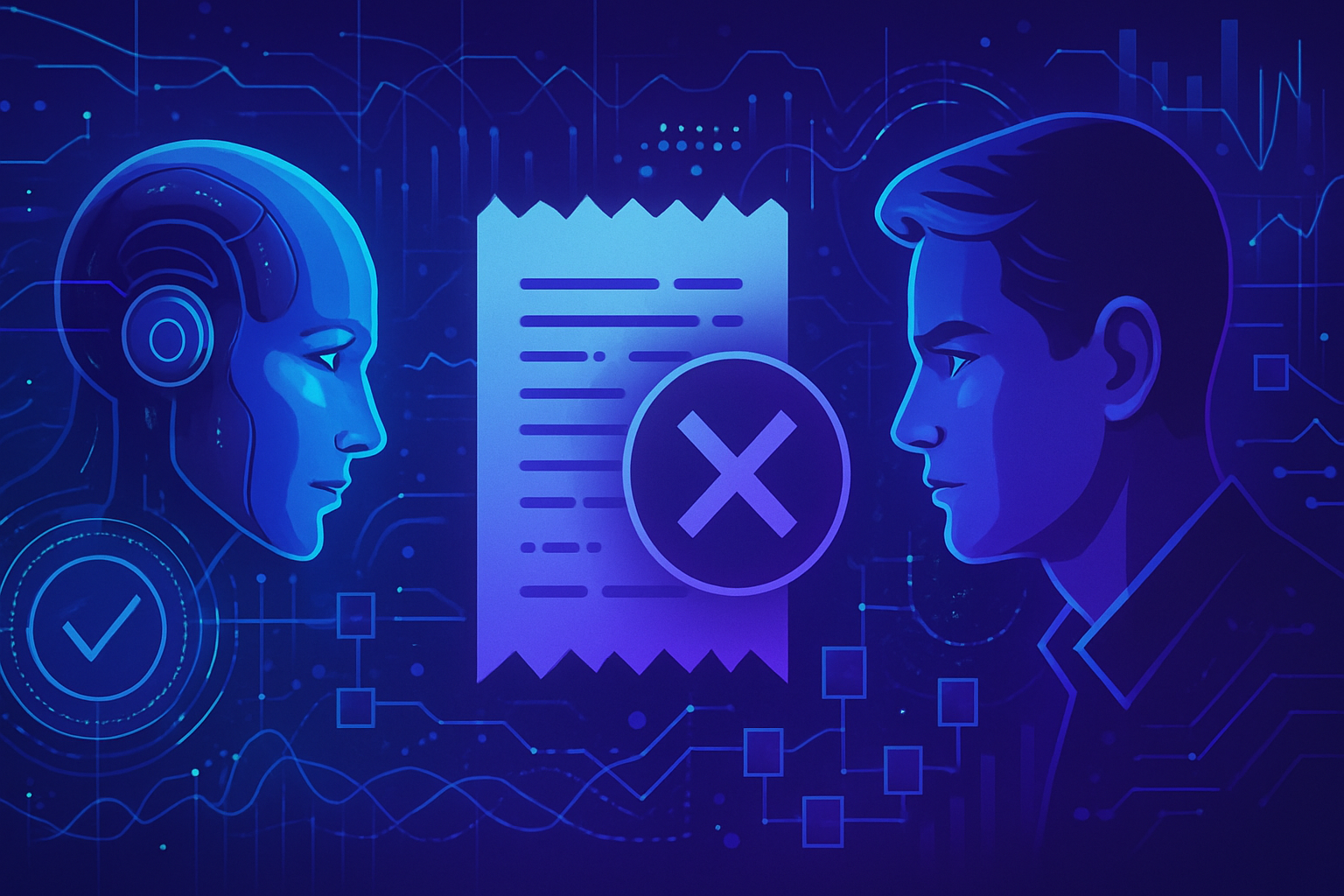Emerging technology, ubiquitous deception. The digital age, saturated with information, fosters the proliferation of fake receipts. In the face of this reality, artificial intelligence becomes an essential tool. The stakes are immense: determining the veracity of data, preserving informational integrity, and combating disinformation. Artificial intelligence confronts its own mechanisms. The ability to detect fake receipts is no longer a slogan but an imperative. Technological advancements open up unprecedented perspectives in the fight against digital fraud. Every day, algorithms refine their ability to discern truth from falsehood. A significant challenge, demanding rigor and discernment.
Artificial Intelligence and the Detection of Fake Receipts
The fight against digital fraud takes on a new dimension thanks to the emergence of artificial intelligence technologies. Fake receipts, proliferating on the Internet, pose a growing challenge for businesses and financial institutions. Innovative solutions are being developed to identify these fraudulent documents, providing essential protection against scams.
Detection Technologies: A Major Challenge
Sophisticated algorithms analyze millions of transactions in search of anomalies. These systems use deep neural networks to learn patterns from authentic data and detect irregularities. For example, advancements in the field of computer vision allow for a visual examination of the formatting and content of receipts to identify hidden signatures of forgery.
Collaboration Between AI and Traditional Methods
The use of artificial intelligence does not mean abandoning conventional methods. Businesses combine human analyses with automated tools to enhance the accuracy of assessments. This hybrid system minimizes human errors while ensuring a thorough verification of submitted documents.
Economic and Social Consequences
The proliferation of fake receipts results in significant financial losses, often borne by consumers or businesses. By limiting these frauds, artificial intelligence contributes to greater economic stability and increased trust in digital transactions. The security measures implemented also generate collateral benefits, such as increased customer satisfaction and improved reputation for the involved businesses.
Applicable Examples in Various Sectors
Organizations such as financial services leverage these technologies to protect their clients. Partnerships with technology start-ups strengthen preventive measures. In other areas, such as healthcare, artificial intelligence could help detect insurance-related fraud, ensuring a better allocation of resources.
Challenges to Overcome
Despite advancements, several challenges remain. The creativity of fraudsters constantly adapts to new technologies, making the fight relentless. Regulations surrounding the use of personal data also complicate the implementation of AI solutions in certain contexts. Thus, businesses must navigate carefully to balance innovation and compliance.
Futuristic Trends
On the horizon, the merger of artificial intelligence technologies with blockchain systems could provide an effective remedy against fake receipts. This technological marriage promises unprecedented traceability of transactions and enhanced data security. Another noteworthy trend is the emergence of smart stethoscopes capable of quickly evaluating suspicious transactions, akin to those developed for medical diagnostics.
Perspectives and Innovations
Future developments will focus on increasing the automation of document validation procedures. By integrating predictive models, businesses can more effectively anticipate fraud attempts. These advancements will transform the economic landscape by raising the security standards within digital transactions.
Common FAQs
What is the detection of fake receipts using artificial intelligence?
The detection of fake receipts refers to the use of artificial intelligence techniques to identify and distinguish authentic documents from those that have been forged or artificially generated.
How can artificial intelligence recognize a fake receipt?
Artificial intelligence analyzes various aspects such as the document’s structure, visual patterns, and metadata to detect anomalies characteristic of fake receipts.
What artificial intelligence tools are effective for detecting fake receipts?
Effective artificial intelligence tools include machine learning algorithms, neural networks, and optical character recognition (OCR) systems, all of which can contribute to this detection.
What are the main challenges of AI in detecting fake receipts?
Challenges include the sophistication of forgery techniques, the need for large amounts of training data for the models, and the management of false positives during analysis.
How can the accuracy of AI systems in detecting fake receipts be improved?
To improve accuracy, it is essential to use diverse datasets for model training, optimize algorithms, and incorporate feedback from users during result evaluation.
Is AI detection of fake receipts reliable?
Although AI systems are becoming increasingly reliable, no method is infallible. A complement of human expertise is often necessary to validate the results provided by algorithms.
Is this applicable to all types of receipts?
Yes, detection techniques can be adapted to different types of receipts, whether electronic or paper, but their effectiveness may vary depending on the specific characteristics of each type.
How can businesses benefit from using AI to detect fake receipts?
Businesses can reduce financial losses caused by fraud, improve the efficiency of their verification processes, and strengthen customer trust through effective detection systems.
What are the limitations of AI systems in detecting fake receipts?
Limitations include implementation costs, the complexity of algorithms necessary for sophisticated cases, and the ongoing need to update models in response to new forgery techniques.






